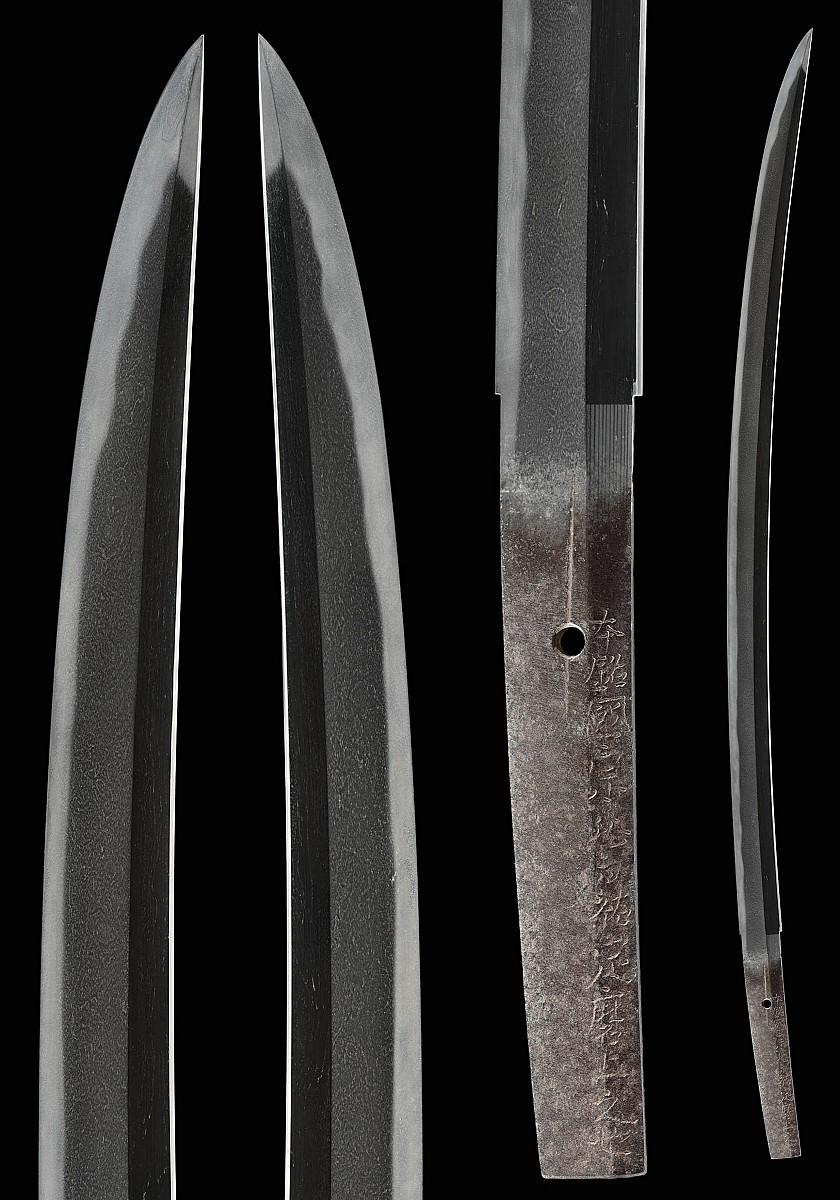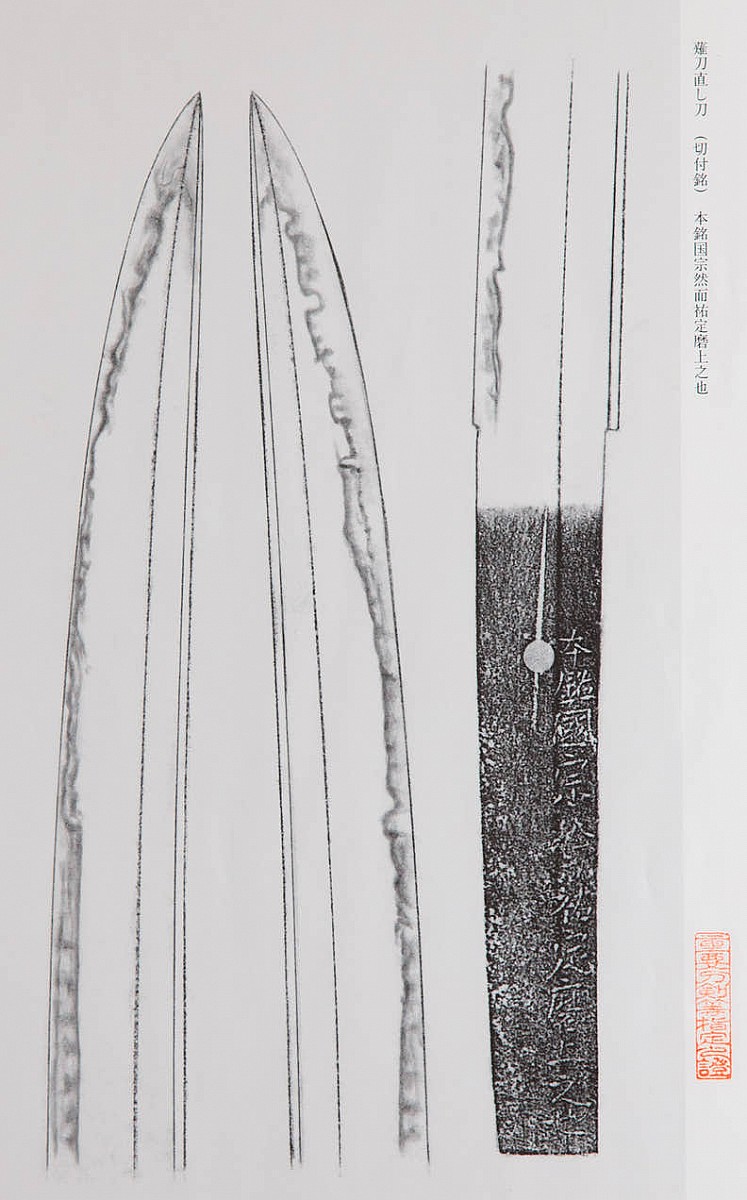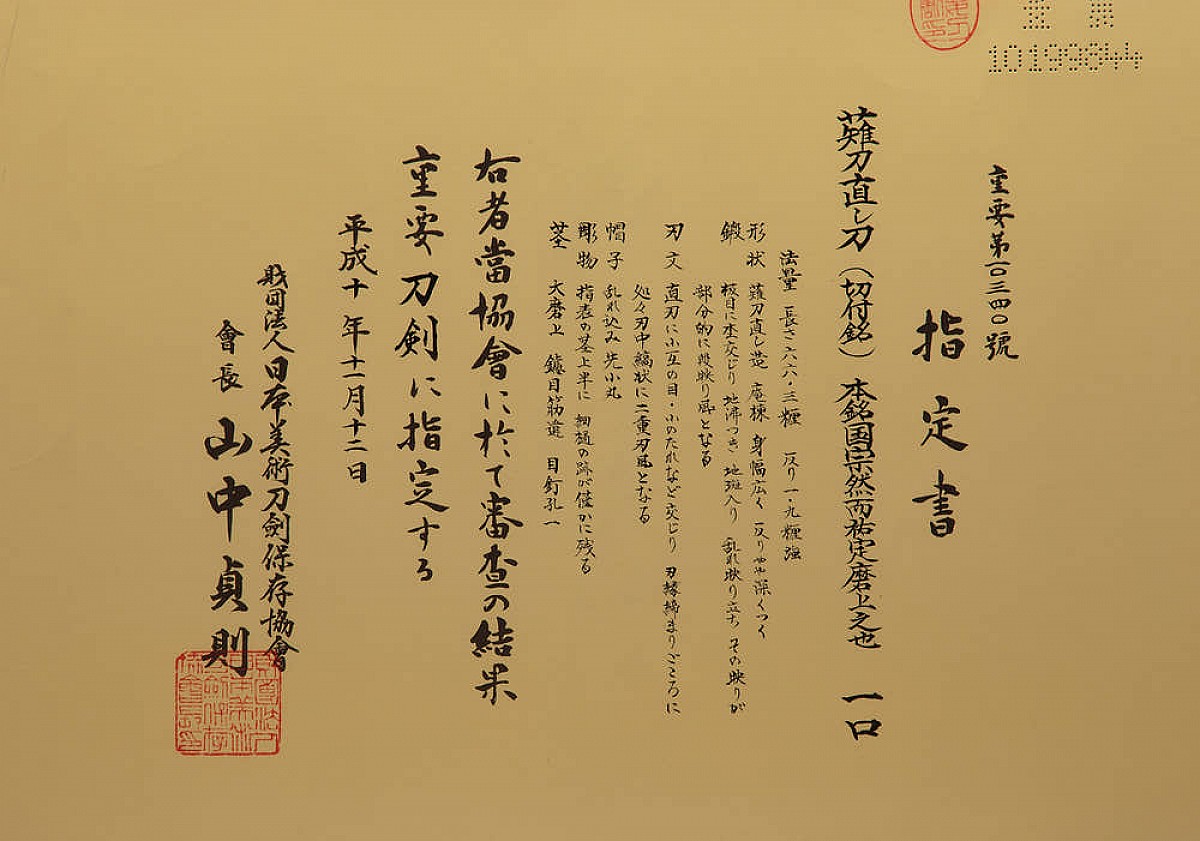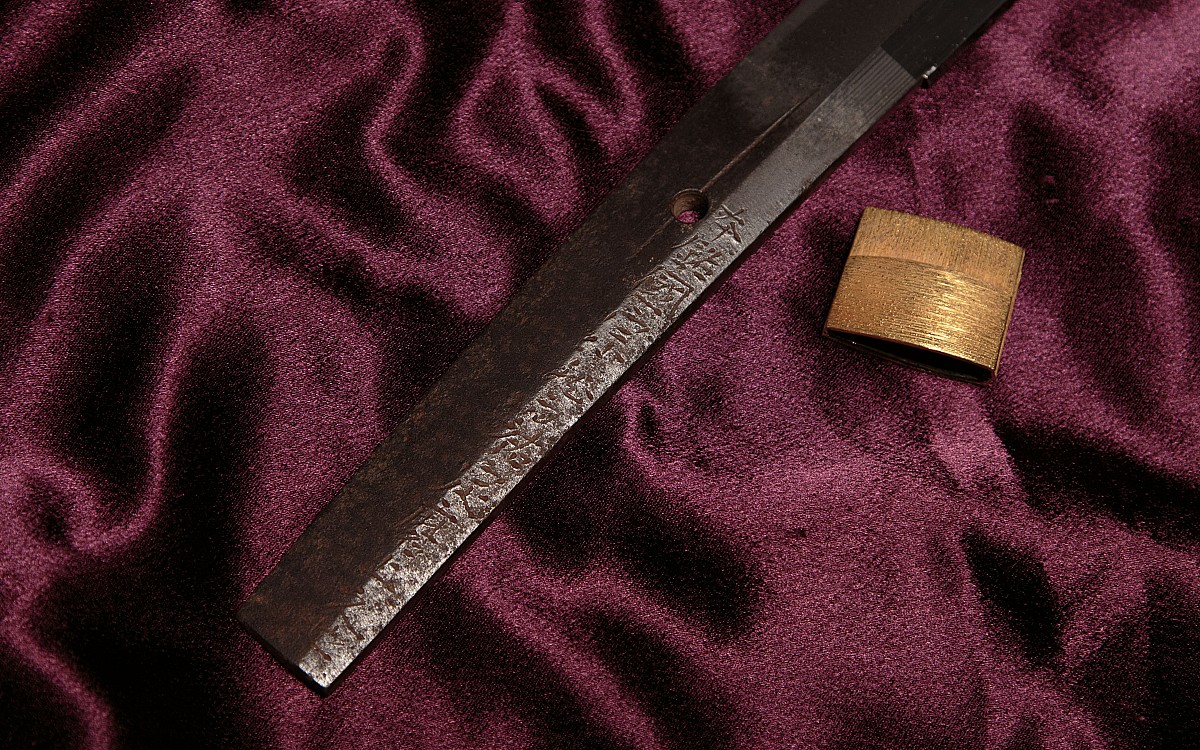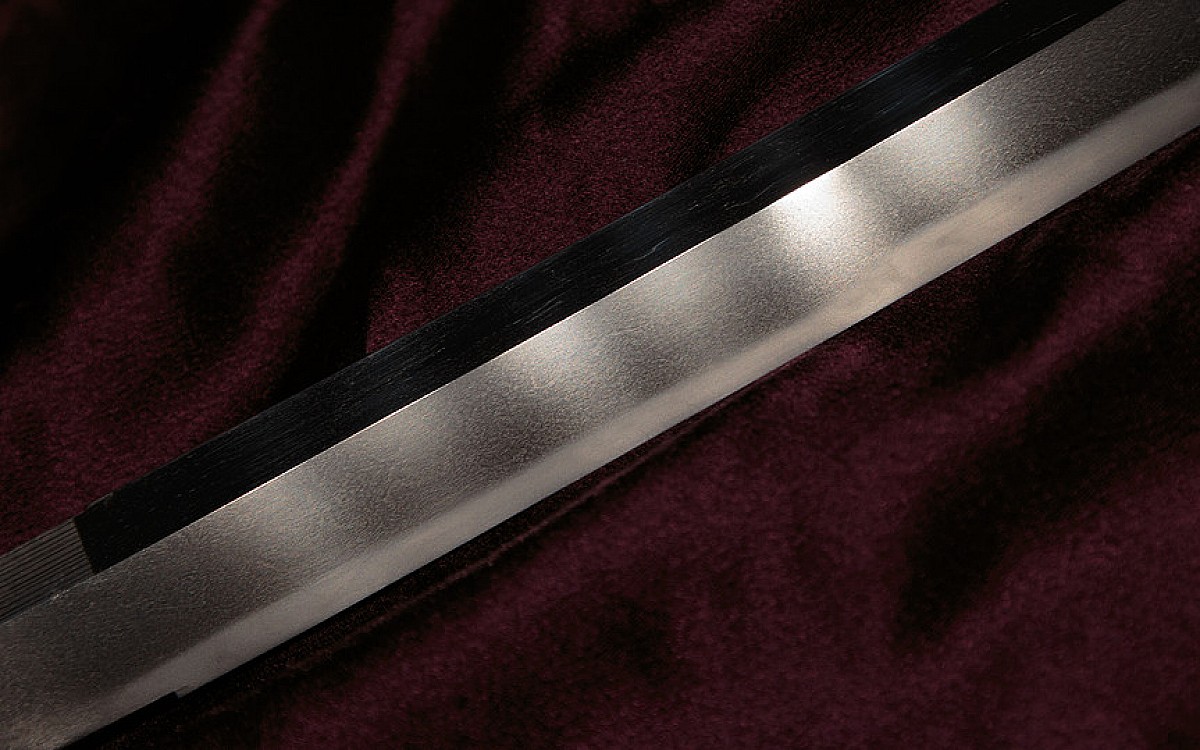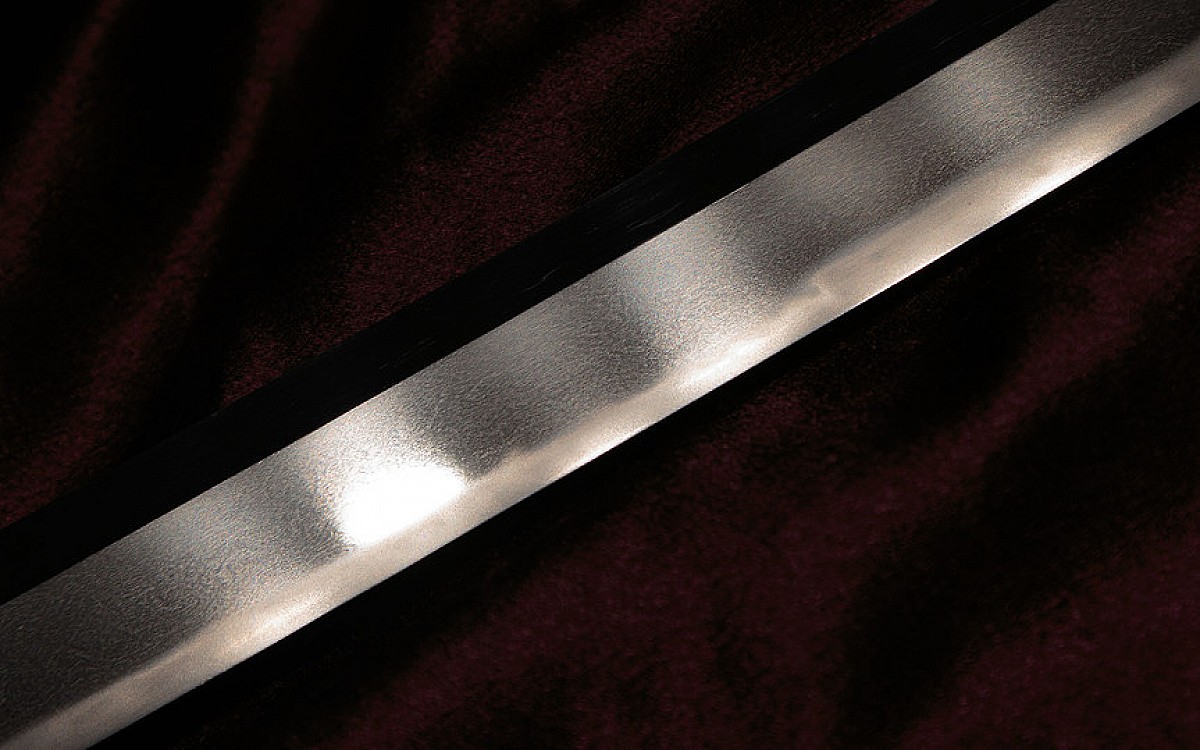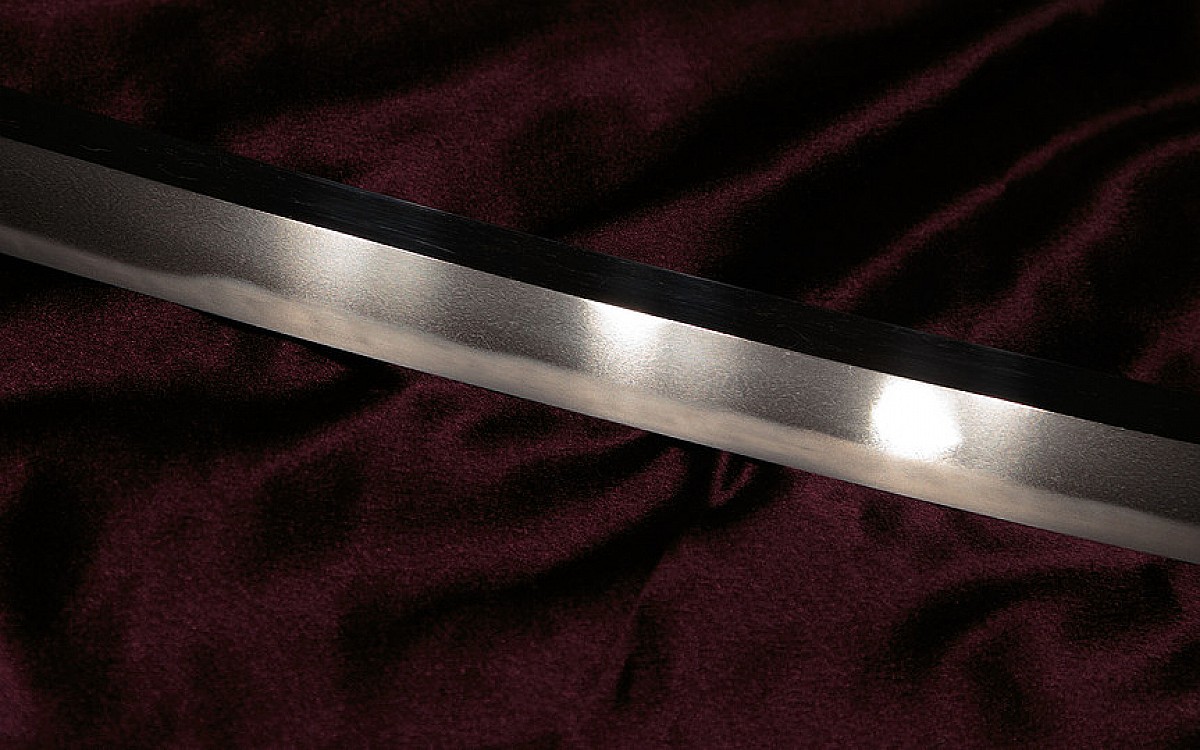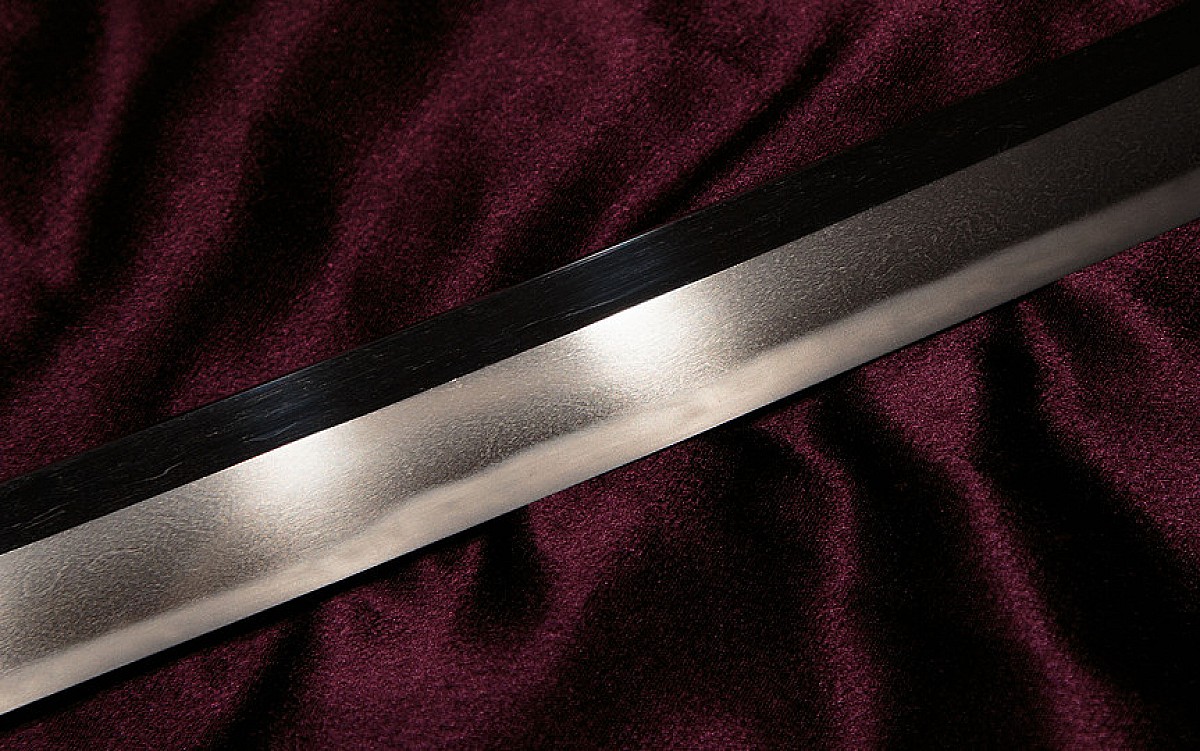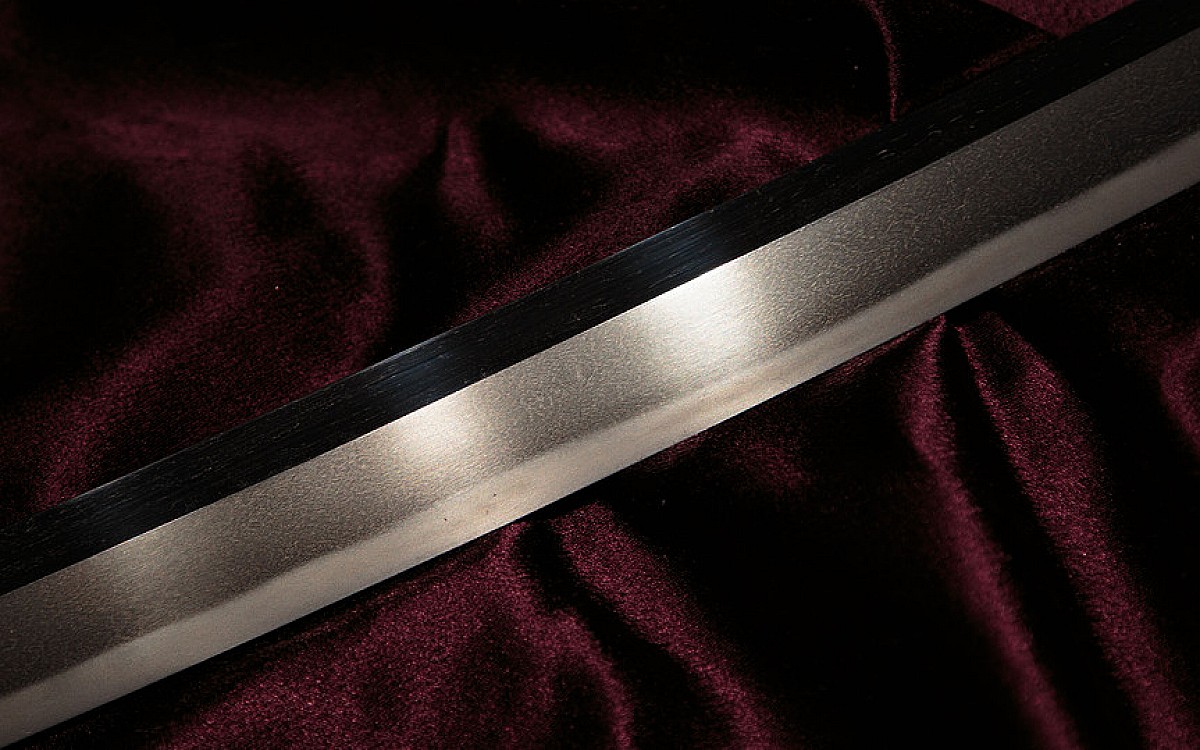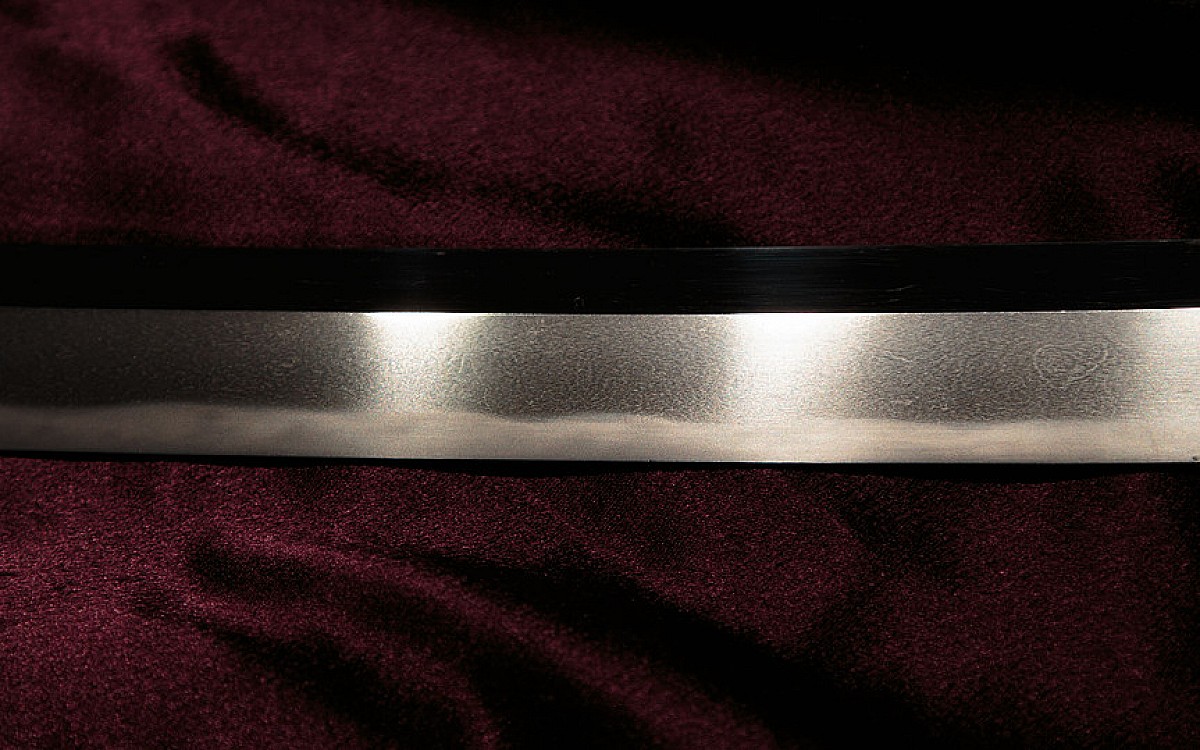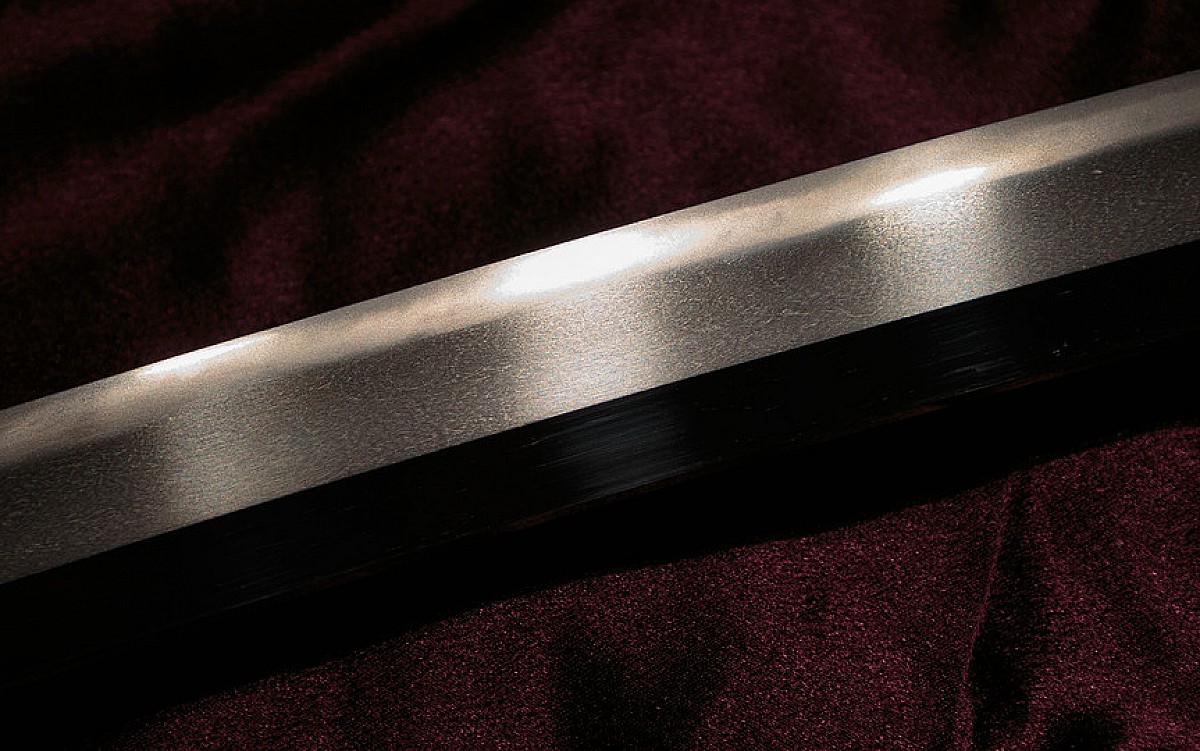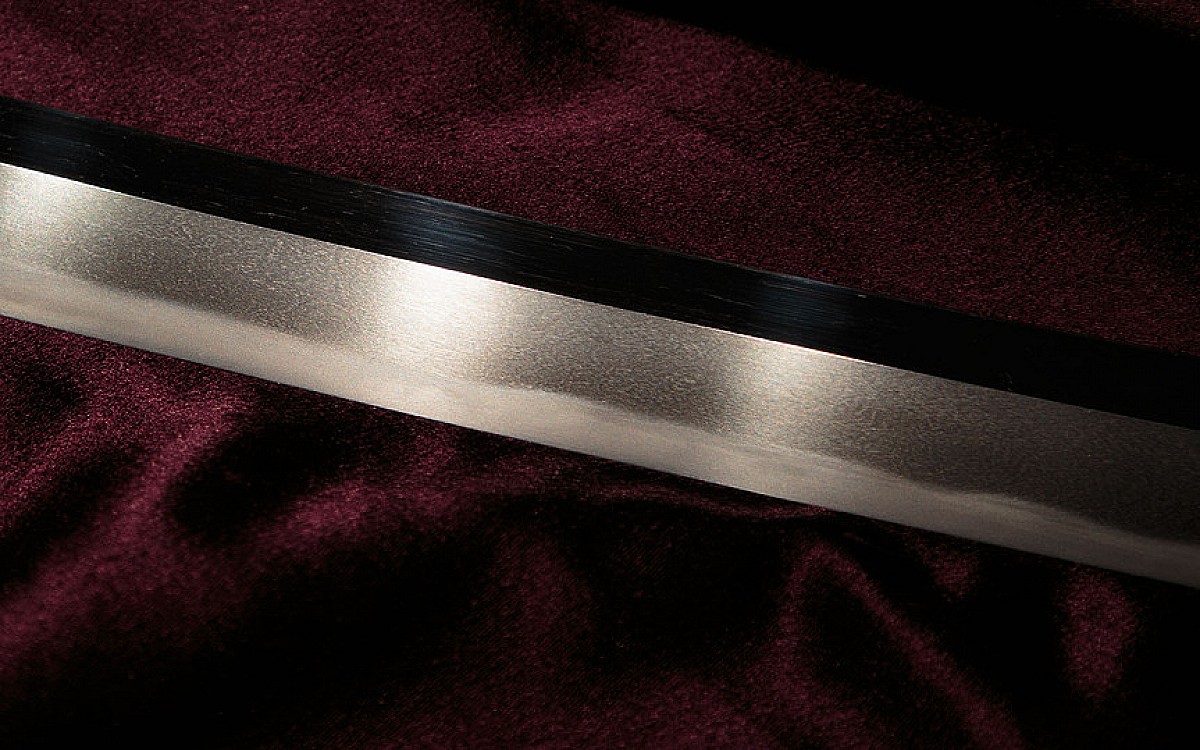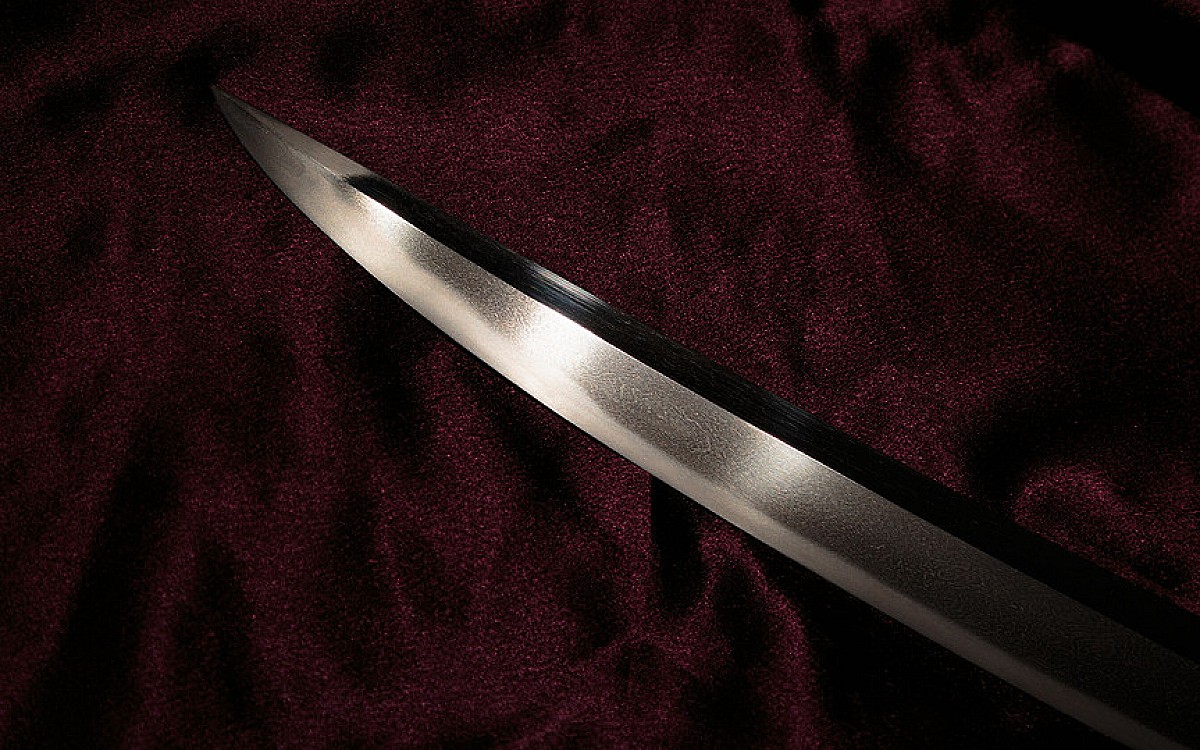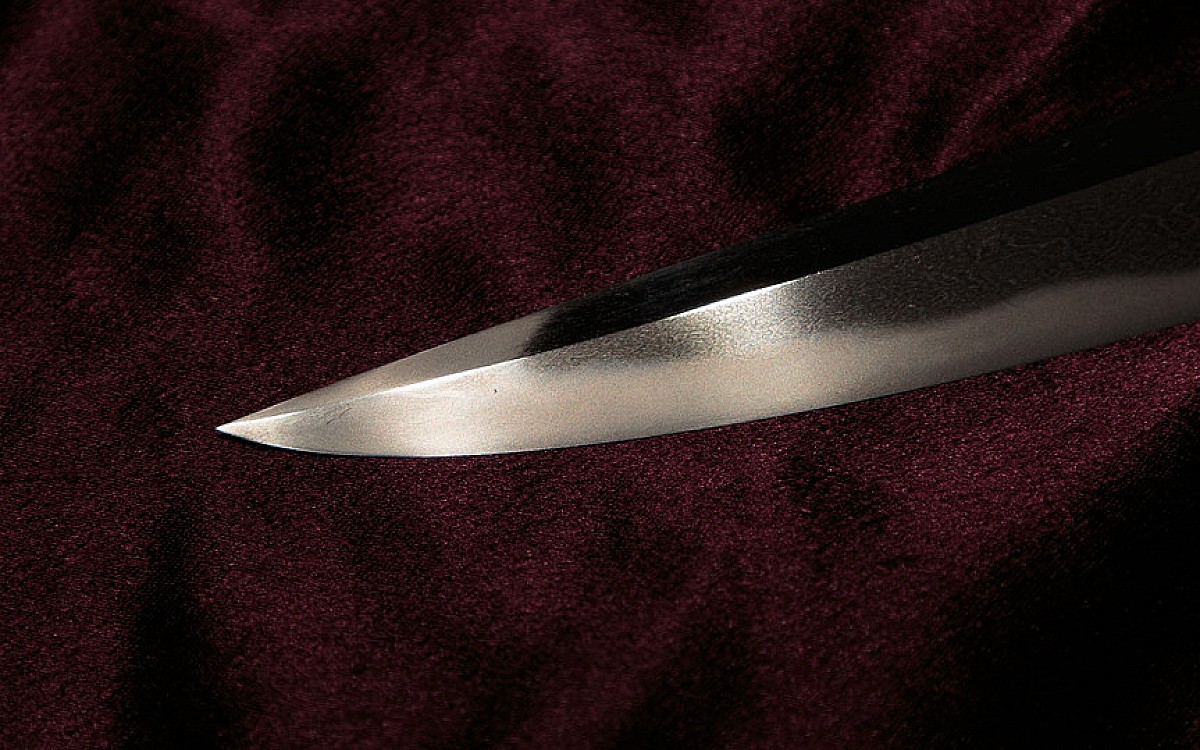Kunimune (国宗), 1st gen., Shōgen (正元, 1259-1260), Bizen – „Kunimune“ (国宗), called „Bizen-Saburō“ (備前三郎), he derived from the line of Bizen Naomune (直宗) and was the third son of Kunizane (国真). San'indo (山陰道), saijō-saku.
Designated as Jūyō Token at the 44th jūyō-shinsa held on the 12th of November 1998.
o-suriage, one mekugiana, Honmei Kunimune shikarishikōshite Sukesada wa kore o suriageru nari (bore originally a signature of Kunimune but which was lost by the shortening carried out by Sukesada).
This sword is in immaculate condition, with an extremely healthy and beautiful ji-hada and all the hallmarks of Saburo Kunimune in its construction. The NBTHK stated that the condition is outstanding and that it is a remarkable masterpiece of the smith, very high praise indeed. Furthermore the work is of such high level that Tanobe Sensei drew a comparison to one of the Tokubetsu Jūyō examples of this same smith in the sayagaki, which is the first time encountered such a statement in his sayagaki. The particular example he compares it to is pictured to the right. I think if you are to compare the oshigata with this naginata naoshi, you may find yourself in agreement with me that the hamon on this naginata naoshi is superior. Kunimune's work in the hamon in particular has always been different from any other smith, and it positively glows in this piece. This naginata naoshi has jifu utsuri, which is usually found on very old Bizen and Aoe pieces, as well as dan utsuri which is the combination of midare utsuri layered on top of suji utsuri. The NBTHK writes that the habuchi is tight, which as above indicates the great degree of health of this blade.
Author: Darcy Brockbank ( published on www.yuhindo.com).
